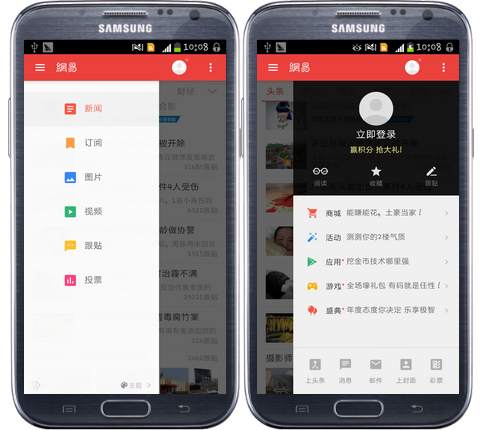編輯:關於android開發
java.lang.Object
↳ android.view.View
↳ android.view.ViewGroup
↳ android.widget.FrameLayout
↳ android.widget.TabHostTAB的容器。這個對象包含兩個子元素:
tab(標簽)有一個indicator,content後台tag.例如:
tabHost.addTab(tabHost.newTabSpec("tab_time").setIndicator("時鐘").setContent(R.id.tab_time));有三個重載的方法可以設置標簽的名字和圖案。返回值都是TabHost.TabSpec
返回值都是TabHost.TabSpe。是第一個比較常用。
這是相當於一個tag的身份證,在 new TabSpec(String tag)決定了
http://www.cnblogs.com/Mihai/
public class TabHost...{
//常用屬性
private TabWidget mTabWidget;
private FrameLayout mTabContent;
private List<TabSpec> mTabSpecs = new ArrayList<TabSpec>(2);
private OnKeyListener mTabKeyListener;
public void setup(){
//這裡實例化TabWiget
mTabWidget = (TabWidget) findViewById(com.android.internal.R.id.tabs);
if (mTabWidget == null) {
throw new RuntimeException(
"Your TabHost must have a TabWidget whose id attribute is 'android.R.id.tabs'");
}
....
mTabWidget.setTabSelectionListener(new TabWidget.OnTabSelectionChanged() {
public void onTabSelectionChanged(int tabIndex, boolean clicked) {
setCurrentTab(tabIndex);
if (clicked) {
mTabContent.requestFocus(View.FOCUS_FORWARD);
}
}
});
mTabContent = (FrameLayout) findViewById(com.android.internal.R.id.tabcontent);
if (mTabContent == null) {
throw new RuntimeException(
"Your TabHost must have a FrameLayout whose id attribute is "
+ "'android.R.id.tabcontent'");
}
}
}
注意:在自定義自己的TabHost的時候,Tabwiget和FrameLayout不可以自定義Id。為它需要在setup裡面實例化,因此需要在addTab添加內容之前調用setup方法
 【騰訊Bugly干貨分享】Android Linker 與 SO 加殼技術,buglyandroid
【騰訊Bugly干貨分享】Android Linker 與 SO 加殼技術,buglyandroid
【騰訊Bugly干貨分享】Android Linker 與 SO 加殼技術,buglyandroid本文來自於騰訊bugly開發者社區,非經作者同意,請勿轉載,原文地址:
 淺談DrawerLayout抽屜效果,drawerlayout抽屜
淺談DrawerLayout抽屜效果,drawerlayout抽屜
淺談DrawerLayout抽屜效果,drawerlayout抽屜DrawerLayout是V4包下提供的一種左滑右滑抽屜布局效果。 實現效果如下: 因為是官方提供的
 用設計精美的閱讀指讀應用項目源碼,設計精美源碼
用設計精美的閱讀指讀應用項目源碼,設計精美源碼
用設計精美的閱讀指讀應用項目源碼,設計精美源碼 這個叫指讀的App設計簡約,走MD風格,UI設計很清新,我個人挺喜歡。 這次上傳的源碼是在Eclips
 Activity詳解二 activity數據傳遞,activity詳解
Activity詳解二 activity數據傳遞,activity詳解
Activity詳解二 activity數據傳遞,activity詳解首先看效果圖: 1.Bundle類的作用 Bundle類用作攜帶數據,它類似於M